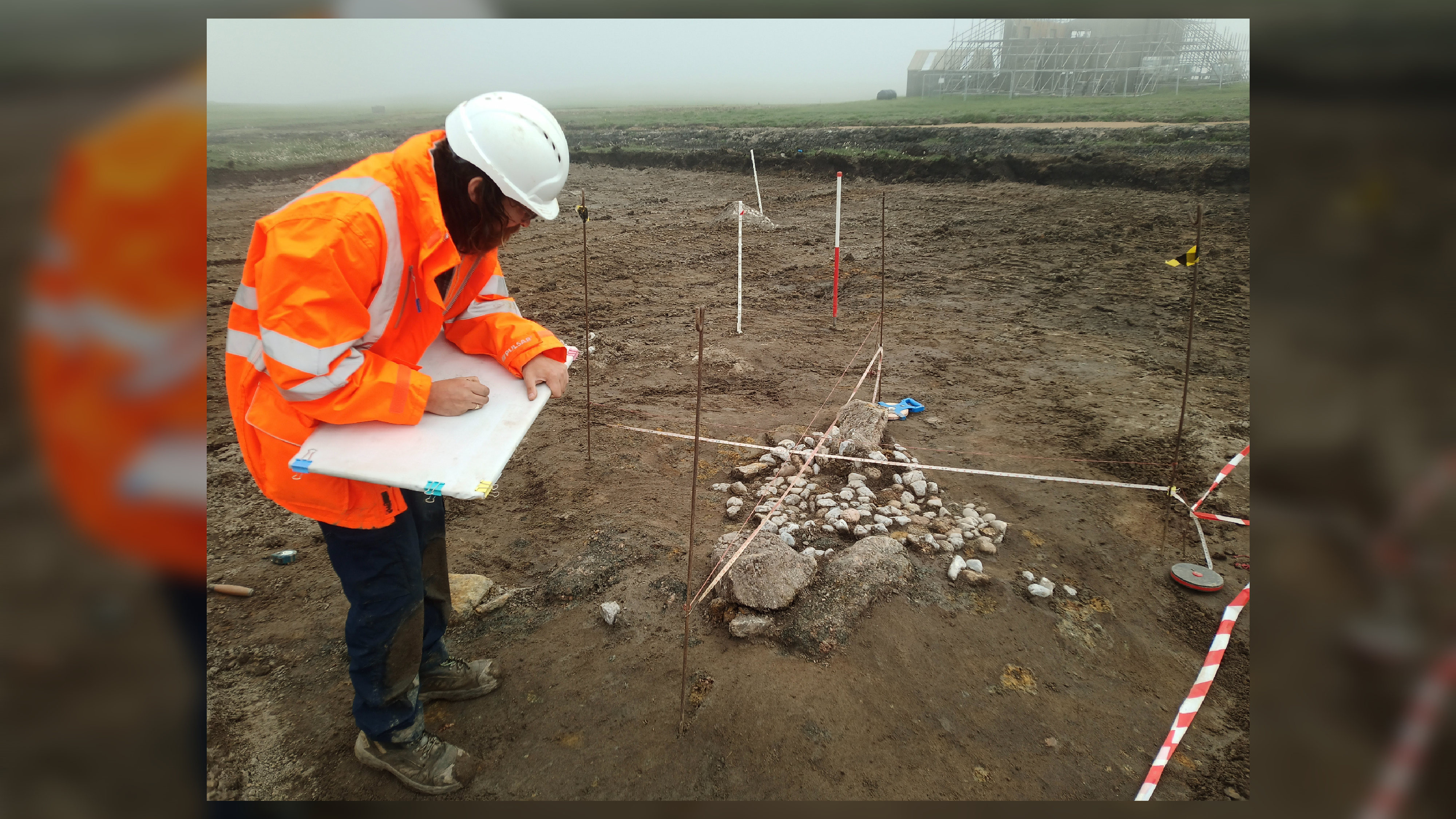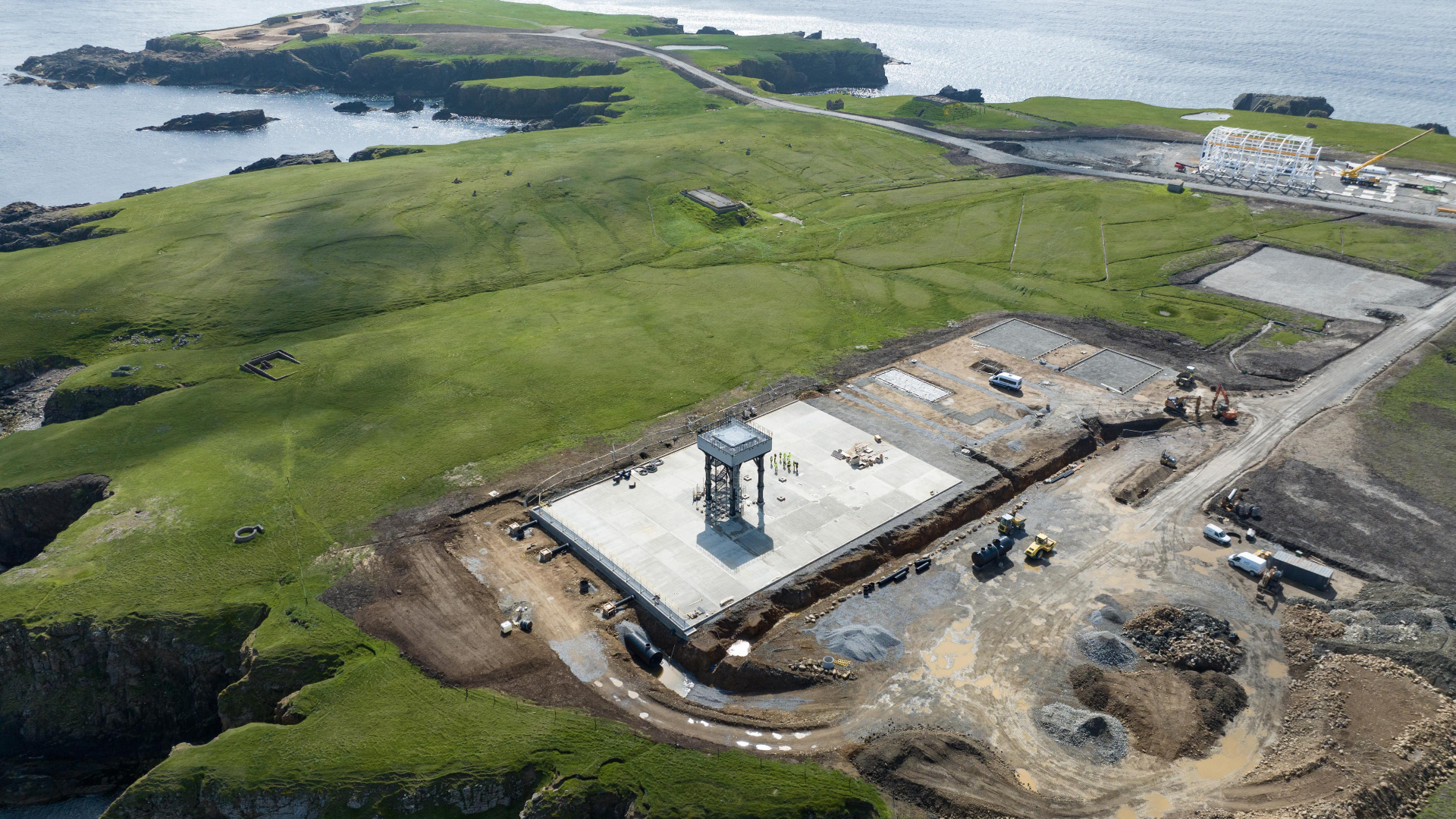4,000-year-old cemetery discovered at future rocket launch site in UK
Archaeologists think the burial site dates from about 4,000 years ago, during the Bronze Age.

Archaeologists have unearthed a 4,000-year-old cemetery in the Shetland Islands in northern Scotland, ahead of the construction of one of the U.K.'s first rocket launchpads.
The finds at the site on Unst, Shetland's northernmost island, include several deposits of cremated human bones and an arc of buried boulders, Shetland's regional archaeologist Val Turner told Live Science.
"You couldn't see anything at all above the surface," she said.
But the ancient cemetery is similar to others found above the ground on the Shetland Islands and elsewhere, and the archaeologists think it dates from the Bronze Age, between about 2200 B.C. and 1800 B.C.
The discoveries were made in mid-July during preparations for the SaxaVord Spaceport on the Lamba Ness peninsula, where the first rocket is scheduled to launch in October. If that goes ahead, it will be the first vertical rocket launched from anywhere in the U.K.
Related: See the face of 'Ava,' a Bronze Age woman who lived in Scotland 3,800 years ago
Ancient burials
The ancient cemetery consists of at least a dozen burial deposits within an arc of buried granite boulders and pits that may have formed a full circle, Turner said. But it's not known yet how many sets of cremated human remains are in each pit.
Get the world’s most fascinating discoveries delivered straight to your inbox.
Scientific studies — including ancient DNA analysis, if possible — will now be used to determine how many people were buried there, and anything else that can be learned from them, she said.
It's also not clear whether the burials hold local people or immigrants to the region. However, during the Bronze Age, the islands' climate was then getting worse, Turner said, and life was getting harder — which meant immigrants from Scotland or Norway may have been less tempted to settle there, and the people in the graves were more likely to be locals.
Even if they were local people, "their ways of life are changing — they've now got bronze, and they are changing the way they buried people," Turner said.
The archaeologists also unearthed a circular patch of white quartz rocks, which have also been found at cemeteries from the Iron Age (about 800 B.C. to A.D. 400) and the Pictish period (from the Iron Age until about 900.)
"White quartz is something that has been regarded as special throughout the ages," Turner said.
Some features at the cemetery, including the alignments of the boulders, pits and the quartz rock setting, also suggest there may have been a ritual complex at the site.
Bronze Age to Space Age
Although they're very remote, people have been living on the Shetland Islands for at least 6,000 years, long before the cemetery was established, Turner said. The archipelago has thousands of archaeological sites, but this is the first Bronze Age cremation cemetery excavated there: "It's the best we've had a chance to look at in modern times, which is why it's very exciting," Turner said
The ancient cemetery is in what's expected to be an open area of the spaceport, and the company is now considering preserving the site.
The spaceport's footprint also includes the remains of a World War II radar base that is legally protected as a historic site.
Because of this, Turner said, archaeologists from the firm AOC archaeology were on the site at all times during the land clearing. "They've been finding mainly wartime things up to now, discarded things that were left behind by the soldiers," she added.
SaxaVord Spaceport plans to build three commercial launch pads and a ground station at Lamba Ness, and is scheduled to launch its first rocket there in October.
Another commercial rocket spaceport is being built in Scotland's northern Sutherland region, but the operators haven't announced when its launches will start. Meanwhile, Spaceport Cornwall, a facility in the U.K.'s far southwest for "horizontal" satellite launches from aircraft, started operations earlier this year.
Tom Metcalfe is a freelance journalist and regular Live Science contributor who is based in London in the United Kingdom. Tom writes mainly about science, space, archaeology, the Earth and the oceans. He has also written for the BBC, NBC News, National Geographic, Scientific American, Air & Space, and many others.




